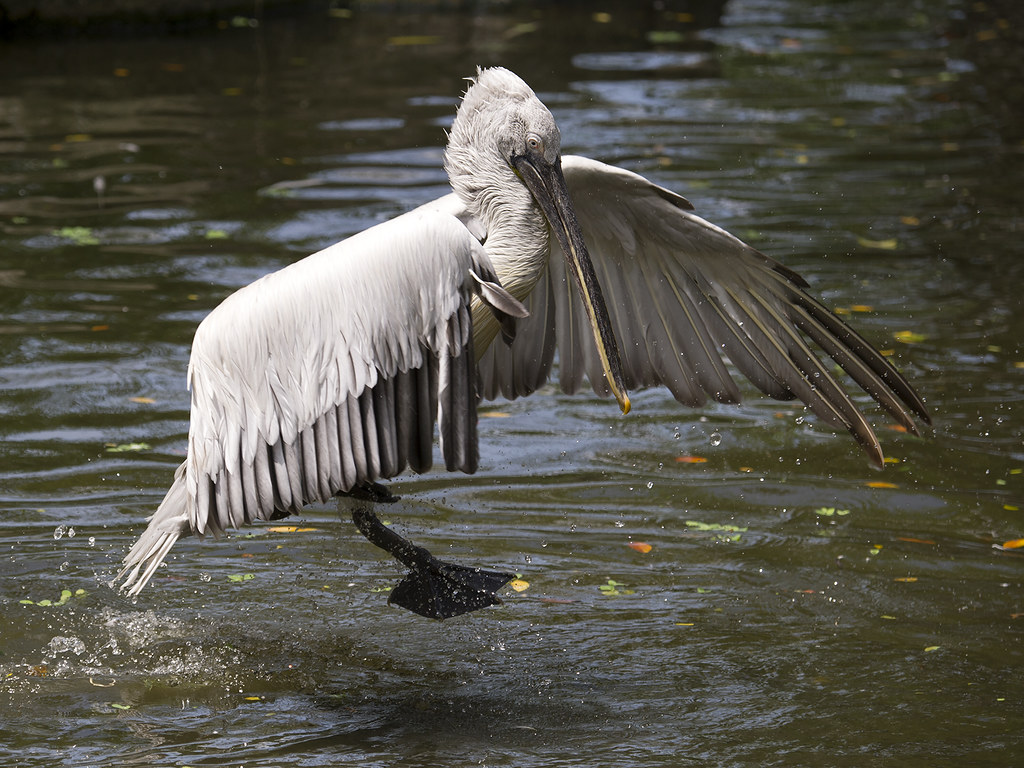Tigris-Euphrates Alluvial Salt Marsh
The ecoregion’s land area is provided in units of 1,000 hectares. The conservation target is the Global Safety Net (GSN1) area for the given ecoregion. The protection level indicates the percentage of the GSN goal that is currently protected on a scale of 0-10. N/A means data is not available at this time.
Bioregion: Red Sea, Arabian Deserts & Salt Marshes (PA26)
Realm: Southern Eurasia
Ecoregion Size (1000 ha):
3,568
Ecoregion ID:
747
Conservation Target:
32%
Protection Level:
4
States: Iraq, Iran
An island of wetlands in a vast ocean of desert’ is often used to describe the Tigris-Euphrates Alluvial Salt Marsh ecoregion, which forms part of the ancient region of Mesopotamia in east Iraq and south-west Iran. Purportedly the site of the biblical Garden of Eden, the region comprises a mosaic of swamps, marshes, freshwater lakes, and seasonally flooded plains, and is a globally important area for birds.
After their drastic destruction during the second half of the last century, the wetlands were re-flooded at the beginning of the new millennium and have demonstrated remarkable ecological resilience. Although they are still highly fragmented, there are glimmers of hope that they might one day return to their former magnificence, fostering populations of otters, wading birds, and water buffalo amongst the reeds.

The flagship species of the Tigris-Euphrates Alluvial Salt Marsh ecoregion is the smooth-coated otter. Image credit: Creative Commons
Located at the northern end of the Persian Gulf, these wetlands are formed in the deltaic plain of the Euphrates, Tigris, and Karun rivers, which drain Turkey, Syria, Iraq, and the western Zagros mountains of Iran. In Iraq, the main wetlands are the Central and Hammar marshes, as well as the Hawizeh marsh, which crosses the border into Iran where it becomes known as Al-Azim. The Shadegan marshes form a disjunct section of the ecoregion in Iran.
The marshes are fed by branches from the main rivers, supplemented by rainfall and flooding during winter months. Snow melt from northern mountain ranges flow into the marshes in the spring before the dry, hot summer months when the water levels reach a minimum. Extreme temperature ranges are typical here, with summer day temperatures rising up to 50°C and dropping to 0°C during winter nights.
This highly dynamic hydrological system is reflected by a highly variable physical environment, although vegetation is largely consistent across the region. Reeds, rushes, and sedge can be found in alluvial soils around the marshes, and the woody riparian willow and riparian poplar are common woody species at the water’s edge.
The marshes host several globally threatened bird species, including up to 40% of the endemic marble teal population in winter, and the near endemic Basra reed warbler, which has more than 70% of its breeding population here. The ecoregion lies within the Mesopotamian marshes Endemic Bird Area, with several Important Bird Areas also across the region, reflecting its importance as a wintering area for migratory birds in Eurasia.
Migrating species include the Dalmatian pelican, marbled duck, black-tailed godwit, the vulnerable greater spotted eagle, and the endangered steppe eagle. This is also a critical habitat for threatened mammal species such as the endemic smooth-coated otter, Mesopotamian gerbil, and the endemic Bunn’s bandicot rat, although there are concerns that the latter may have gone extinct.
The Eurasian otter and Asian water buffalo are also found here, as is the Euphrates soft-shell turtle, a highly endangered species present in only a few locations around Iraq and Iran. Several fish species are endemic, such as the mangar and Mesopotamechthys sharpeyi.

Dalmatian pelican. Image credit: Creative Commons
The marshes have bounced back following conflicts in the past few decades, and many local communities who were displaced during these unsettled periods have returned to live in the wetlands. However, overfishing and overhunting of mammals by these local groups are causes for concern. The Shadegan marshes were declared a Ramsar Site in 1973 and a section of the area is also included a National Wildlife Refuge site. UNESCO designated a large section of the delta in Iraq as a World Heritage site in 2016, encompassing the main Iraqi marshes. The Central Marshes in Iraq are also a National Park and Ramsar site while the Hawizeh marsh is a Ramsar site.
Despite vast improvements since 2003, the marshes are still highly fragmented and face a future that is far from safe. In Iran, pollution, pesticide run-off, and return-flow of irrigation water from agricultural lands is causing significant reduction in the water quality. There are also concerns about the potential damage to ecosystems as a result of increasing tourism interest in the region.
However, the marshes’ greatest threat is the risk of drying out as water is extracted for crop irrigation and dams are constructed on feeder rivers upstream of the delta. This is compounded by regional climate change projections which predict that decreases in snow cover in the upper basin will lead to a reduction in the volume of snow melt run-off destined for the marshes.
The priority conservation actions in the next decade will be to: 1) increase collaboration with surrounding nations to ensure that the minimum water flow required to maintain the wetlands is met; 2) increase monitoring and recording of local wildlife population data, in order to ascertain the scale of illegal bird hunting and overfishing and to support measures addressing these threats; and 3) reduce the impact of pollution from surrounding agricultural lands.
Citations:
- Bachmann, A., et al. (2019) ‘Tigris-Euphrates River Ecosystem: A Status Report’, Paper for the Mesopotamia Water Forum 2019, Sulaymaniyah, Kurdistan Region of Iraq. [Online]. Available from:
- UNESCO (2014). ‘The Ahwar of Southern Iraq: Refuge of Biodiversity and the Relict Landscape of the Mesopotamian Cities’. Nomination Dossier for Inscription of the Property on the World Heritage List.
- Al-Obeidi, L.A. (2018). ‘Iraq and Iran’s Hawizeh Marshes: Threats and Opportunities’. [Online]. Available from: https://www.savethetigris.org/iraq-and-irans-hawizeh-marshes-threats-and-opportunities/ [Accessed 05/08/2019].
- WWF (2019). ‘Tigris-Euphrates alluvial salt marsh. [Online]. [Accessed 05/08/2019]. Available from: https://www.worldwildlife.org/ecoregions/pa0906

.png?auto=compress%2Cformat&w=300)

